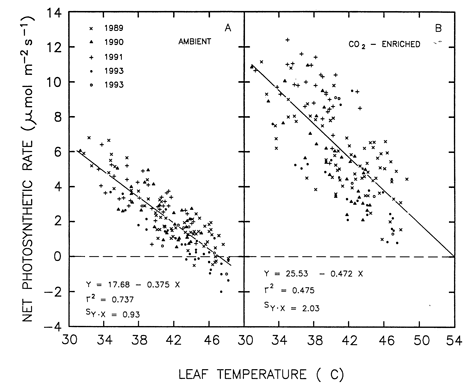| Tweet | Follow @co2science |
Paper Reviewed
Wipf, S., Stockli, V., Herz, K. and Rixen, C. 2013. The oldest monitoring site of the Alps revisited: accelerated increase in plant species richness on Piz Linard summit since 1835. Plant Ecology & Diversity 6: 447-455.
Former NASA scientist James Hansen has claimed in the past - in testimony before a committee of the U.S. House of Representatives, no less - that in response to CO2-induced global warming, plant life in alpine regions is "in danger of being pushed off the planet," as it gradually migrates upward in elevation in response to increasing temperatures. At first glance, this contention does not seem all that unreasonable. In fact, it actually sounds logical. But when assessed in "real time" in the real world, it is found to be something quite different, as demonstrated by the study of Wipf et al. (2013) that was published in the journal Plant Ecology & Diversity.
In introducing their study of the subject, the four Swiss scientists describe how they set their sights on Piz Linard, a 3410-meter-high peak within the Silvretta Range of the lower Engadina Valley of south-eastern Switzerland, where they say "the first verified ascent of Piz Linard was undertaken by Oswald Heer, a leading botanist of his time, and his guide Johann Madutz on 1 August 1835," where and when they encountered a single plant species: Androsace alpina. Three decades later, they report that another botanist scaled the peak and found two additional species within the top 30 meters of the peak; and this number slowly but surely grew as subsequent mountain ascents were made in 1895, 1911, 1937, 1947, 1992, 2003 and 2011, at which latter time the total number of species observed was sixteen.
"It is remarkable," as Wipf et al. continue, "that those species that arrived most recently had historically never been observed at such high altitudes," and they add that "most of the more abundant species extended their ranges into areas of the eastern slope that had previously harbored few species."
But, one might ask, will there come a time when temperatures at the highest elevation of Piz Linard get too hot for even the most heat-tolerant of the current species living there to survive? Of course, one must admit that almost anything is possible. However, it is a demonstrable fact that as the air's CO2 content continues to rise ever higher, so too does the optimum temperature for plant net photosynthesis rise right along with it, as does the even higher temperature at which net photosynthesis shifts from positive to negative and plant death shortly follows.
As an example of this phenomenon, the figure below portrays the results of plotting net photosynthesis measurements of sour orange trees (growing out-of-doors at Phoenix, Arizona, in clear-plastic-wall open-top chambers) against leaf temperature; and based on the linear regression lines fit to the data, it can be seen that the net photosynthetic rate of the foliage growing in ambient air dropped all the way to zero at 47°C, and that it actually became negative thereafter, which condition, if prolonged, would ultimately lead to plant death. In the CO2-enriched trees, on the other hand, the net photosynthetic rate of the foliage was still substantial at 47°C; and the regression line for those trees suggests that their mean rate of foliage net photosynthesis likely would not have declined to zero until leaf temperature reached 54°C.

Leaf net photosynthetic rate vs. leaf temperature for the foliage of sour orange trees growing in air of either 400 or 700 ppm CO2. Adapted from Idso et al. (1995).
And as similar results have been obtained by Jurik et al. (1984), Cannell and Thornley (1998), Kirschbaum (2004), Sage and Kubien (2007) and many others, it is safe to say -- notwithstanding the claims of James Hansen and other climate alarmists -- that as the atmosphere's CO2 concentration rises ever higher, so too will mountain-top vegetation have an ever greater capacity to withstand even further warming.
References
Cannell, M.G.R. and Thornley, J.H.M. 1998. Temperature and CO2 responses of leaf and canopy photosynthesis: a clarification using the non-rectangular hyperbola model of photosynthesis. Annals of Botany 82: 883-892.
Idso, S.B., Idso, K.E., Garcia, R.L., Kimball, B.A. and Hoober, J.K. 1995. Effects of atmospheric CO2 enrichment and foliar methanol application on net photosynthesis of sour orange tree (Citrus aurantium; Rutaceae) leaves. American Journal of Botany 82: 26-30.
Jurik, T.W., Webber, J.A. and Gates, D.M. 1984. Short-term effects of CO2 on gas exchange of leaves of bigtooth aspen (Populus grandidentata) in the field. Plant Physiology 75: 1022-1026.
Kirschbaum, M.U.F. 2004. Direct and indirect climate change effects on photosynthesis and transpiration. Plant Biology 6: 242-253.
Sage, R.F. and Kubien, D. 2007. The temperature response of C3 and C4 photosynthesis. Plant, Cell and Environment 30: 1086-1106.
Posted 12 November 2014



